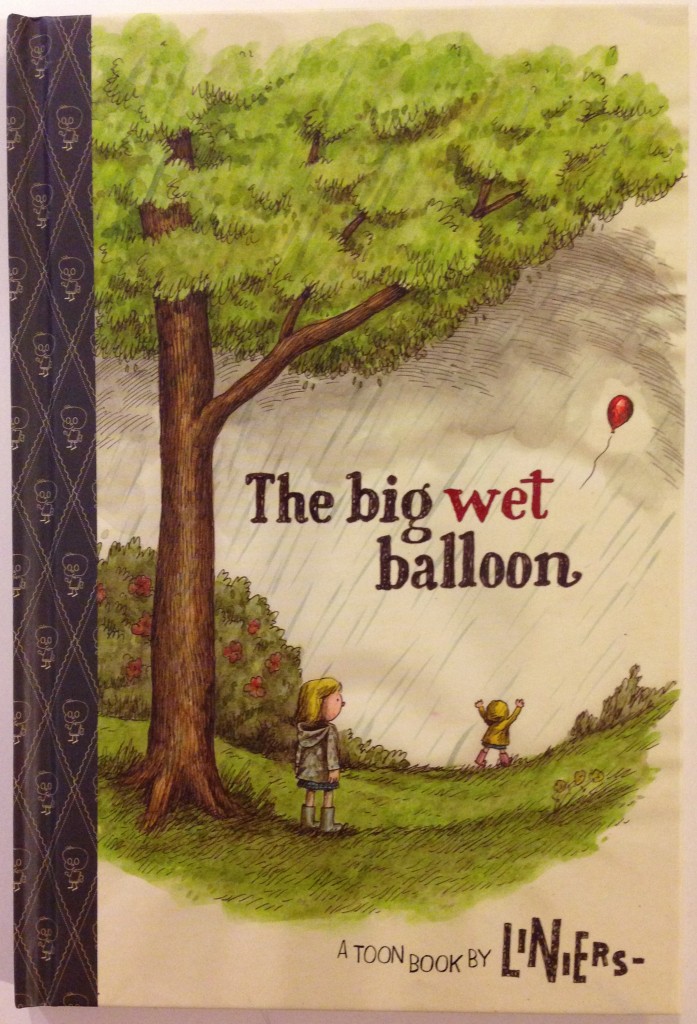The big wet balloon written and illustrated by Liniers. TOON Books, 2013. ISBN 978-1-93-517932-0
Summary: Matilda wakes up early on a Saturday, and is so excited to share the day with her younger sister, Clemmie. She has plans for a picnic and flower picking, but then they discover that it is raining. Undeterred, Matilda bosses a reluctant Clemmie into her raincoat and boots, and out into the rain.
When Clemmie doesn't like being wet, Matilda runs back inside to fetch an umbrella for her. As the girls are enjoying the sound of the rain on the umbrella, the wind begins to gust and the umbrella turns inside out. Not giving up, Matilda shows Clemmie how to catch raindrops on her tongue, stomp in puddles, and even look for worms.
The sun begins to peek out from behind the clouds, and then a glorious rainbow appears. Matilda tells Clemmie that they must give something colorful to the rainbow and goes inside to find something to give. She returns with Clemmie's favorite red balloon, which floats away when Matilda loosens her grip on it. Clemmie is devastated, but Matilda just might have a plan to make things right again.

Critical Evaluation: The Big Wet Balloon is a wonderful introduction to the world of comics for young children. With just one to four panels per page, only two characters, and short narrative statements, pre-readers and beginning readers will have little trouble following the plot. A comic such as this can help draw reluctant readers into discovering that reading can be terrific fun.
Liniers has used a muted palette to represent the sisters' rainy day experience, but has included a great deal of movement and texture in his portrayal of the rain, wind, and clouds. He has conveyed a great deal of emotional interplay between the two sisters in their facial expressions and postures, and after finding out that this story is based on a true story about his own daughters, it became quite apparent that Liniers poured his love for them into the creation of this graphic novel.
At the end of the narrative, there is a marvelous guide for parents and teachers about how to read comics with children. With advice on how to use your finger to indicate your place in the text, and how to invite children to share what they are understanding about the plot based on context and details in the illustrations, the publisher has provided information to help both children and adults enjoy this literary form even more.
Age or Interest Level: Ages 4 to 7
Lexile Level: 190L
Awards: Parents Magazine Top 10 Children's Books of 2013; 2014 Eisner Award Nominee
Why Included? There are not many comics that have been written for this age group, and while this is changing, Liniers' tale is bound to be a classic story that many children will remember fondly as their introduction to this genre.
